
A recent printed front page of The New York Daily News and its website edition


The New York Daily News front page through the years
While I have pondered the question several times in the past five years, working with newspapers that are proud of their tabloid, big and bold heritage, it is The New York Daily News that makes me consolidate some thoughts about the matter today.
Ironically, I am reading a New York Times piece headlined The Daily News Layoffs and Digital Shift May Signal the Tabloid Era’s End while in Amsterdam, and in the newsroom of another “voice of the people” newspaper, De Telegraaf.
Just like The New York Daily News is the epitome of the loud barking people’s newspaper, the champion of the underdog, the man in the subway and the woman in the supermarket type of newspaper for New Yorkers, so is De Telegraaf for people in Holland, and, particularly, Amsterdam.
Both newspapers are undergoing transition, introspection, layoffs and reorganization. Both are seeking a voice (perhaps not louder, thank God for that) in the cacophony of the newspaper landscape in the era of the media quintet. Both, too, have a proud heritage.
We know that, as the Times reminds us, “The News, after all, is the ultimate local paper, and the real-life model for Clark Kent’s Daily Planet.” One can’t fly higher than that.
De Telegraaf this week celebrated publication of its 40,000 edition and has, for the last year, served its readers in a real tabloid format.
What both The New York Daily News, as well as The New York Post, London’s The Sun, Germany’s Bild and, indeed, De Telegraaf, do best is to speak like the people they hope to represent and to attract as readers. “We are Pope,” yelled Bild when a German Pope was named. “Murderer,” screamed De Telegraaf last year when a Malaysian airliner with many Dutch passengers was shot down over the Ukraine. And this is a memorable Daily News headline “KOTCHA!” when Mayor Koch was re-elected in 1985. Or, how about “Rot in Hell” for Osama Bin Laden when his death was announced. Upon reading those headlines, the antithesis of the headlinese that prevails in the majority of mainstream daily newspapers, readers feel that the newspaper is hugging them,sort of your next apartment neighbor sharing a bit of juicy gossip with you, knowing that you agree with the way she is telling you the story.
That, in essence, is what tabloid journalism is all about. A mix of stories that inform, titillate and that are centered around news that you hope happens to you and those that you definitely hope won’t. A tried and true formula.
But, has it seen its days?
Can we not titillate, put our arms around the readers, and yell “We are Pope,” via the screen on that mobile device?
Are those crazy but tempting tabloids of another era on their way to extinction?
The New York Times article gives us the facts;
From its former height of nearly one million copies a day, The News now has a daily circulation of slightly more than 300,000, according to the Alliance for Audited Media, about 130,000 copies of which are single-copy newsstand sales. Only five years ago, The News was selling about 346,000 newsstand copies daily on a total circulation of 525,000.
I did not need to read those numbers to know what I have observed riding the New York City subway often in the past two years: I see very few eyes and noses buried on the pages of the NYC tabloids. Gone is the serendipity of finding a copy of the Post or the Daily News that someone left behind for me to enjoy. The pleasure of another era.
Instead, eyes and minds are buried on their mobile devices. There is no contact of hands with ink and paper. One can shout much better with black ink than with a similarly sized headline on the iPhone, or the Apple Watch.
But perhaps we have not tried hard enough.
And, if someone has created the ultimate traditional tabloid experience for a mobile device, please let me know so that I can profile it here.
I would love to see a headline that covers an entire iPhone screen. I would like to have more audio for that lead headline.
The real robust and enticing tabloids were so good at it that you could swear you heard the voice of that headline writer saying “Murderer,” or “KOTCHA!”. Now we have the ability to really do the shouting via audio, let’s try that.
Ultimately, we have to create the tabloid experience that seduces us out of whatever we are doing, interrupting our momentary routine, creating a detour and making us read the story, ephemeral as its message may be. Also, we must create for mobile the same feeling of belonging that tabloids always brought to their loyal readers.
Michael Daly, a former News columnist, has said:
“All that corny stuff about The News — how it’s the voice of the working people, the heart of New York — it’s all basically true. Every day it would prove that the common man and common woman weren’t so common. That actually, commonness is found more often among the rich and that distinction was found more often among the people who would buy The Daily News.”
What can we do to preserve those same values but via a different platform?
The tabloid spirit is a much needed part of journalistic storytelling. In today’s culture, where the silly and the serious seem to be in an eternal embrace, tabloid=style journalism makes a lot of sense.
Maybe it is time to think hard about the preservation of the tabloid genre for the mobile audience. The two could make very good partners.
Follow up: De Telegraaf rethink, second day
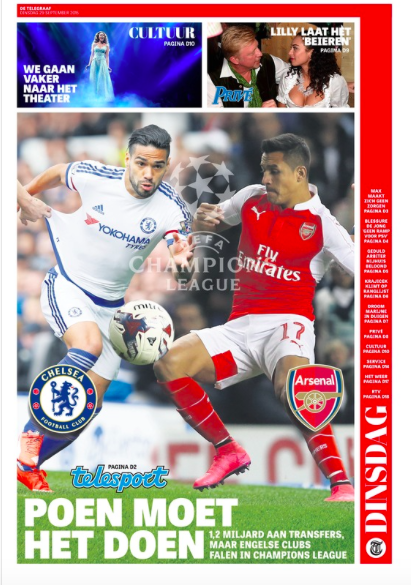
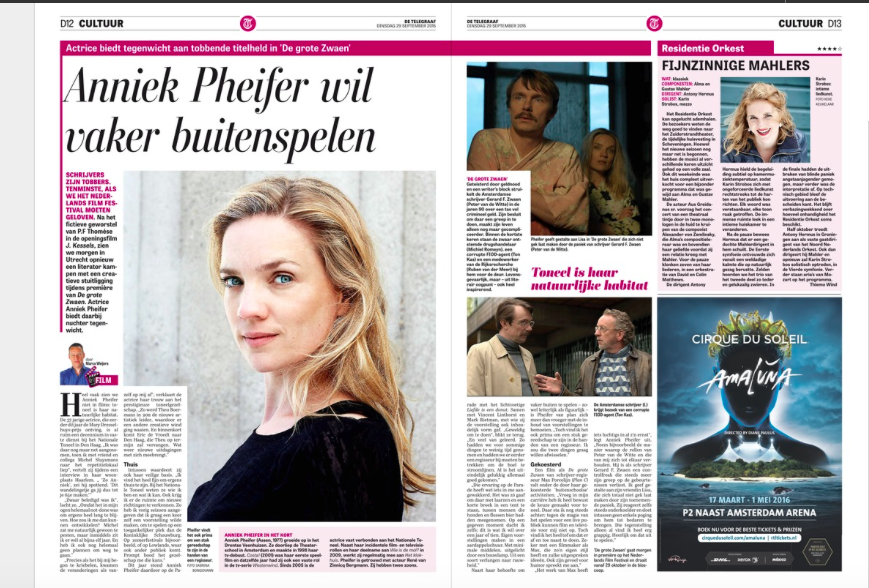

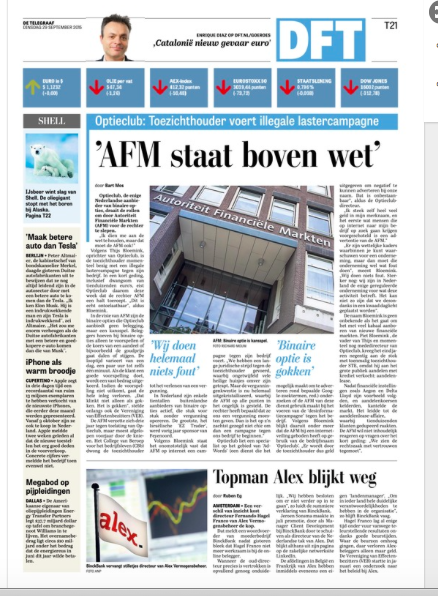
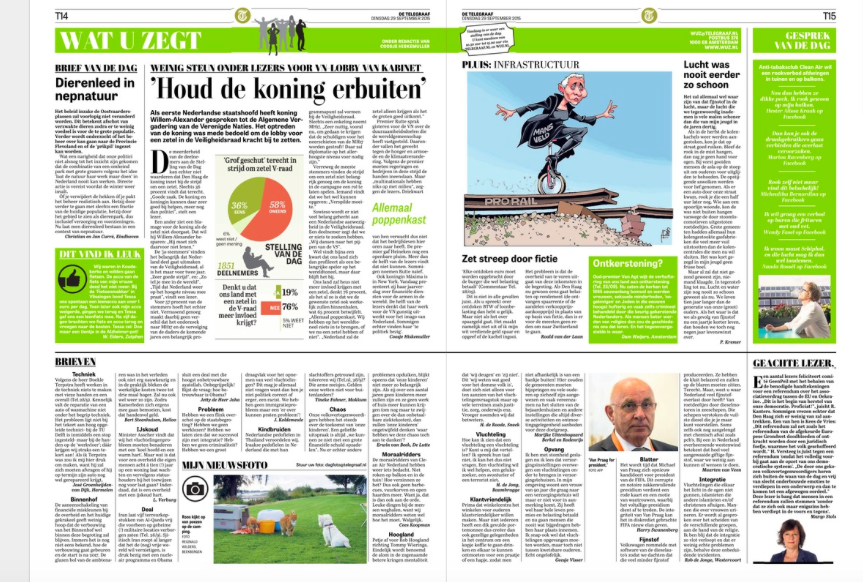


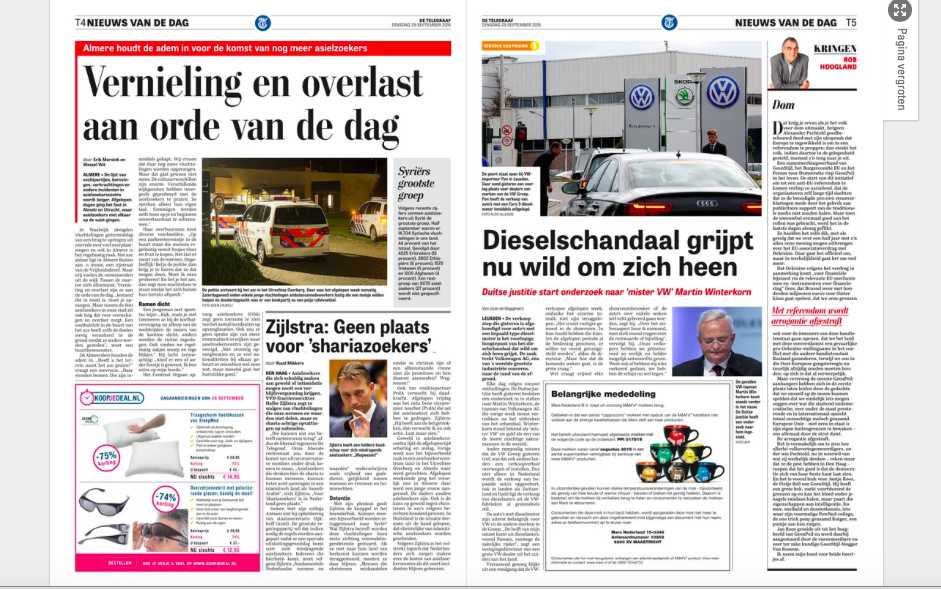
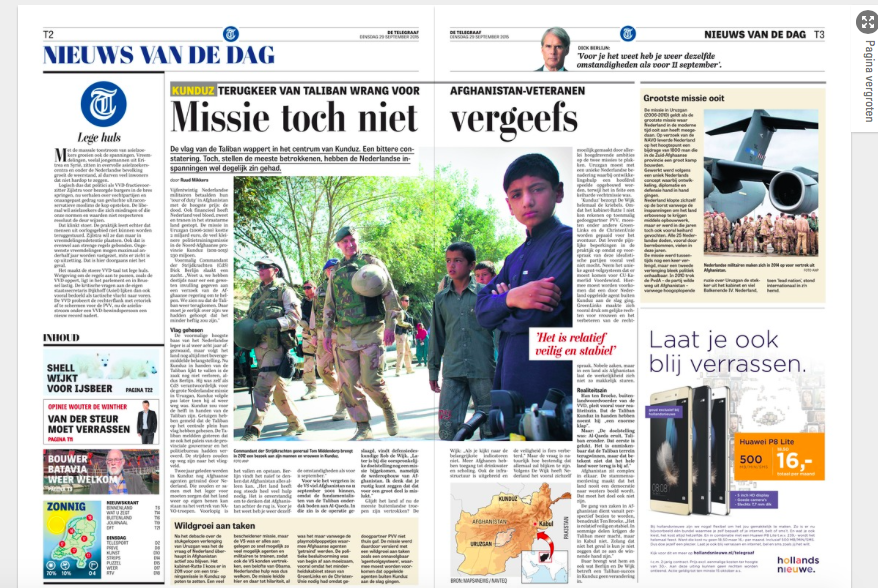
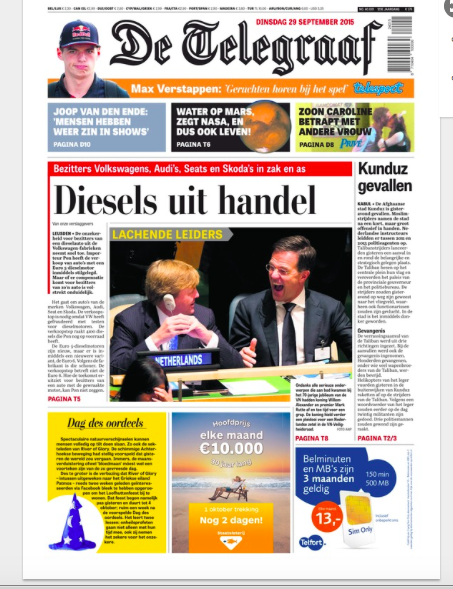
Here are some second day pages after launch of the new De Telegraaf in Amsterdam Monday, September 28.
Take a look! While De Telegraaf preserves some of the bold, colorful spirit that is such a part of its history (40,001 editions today), the new look streamlines the newspaper, makes it more modular and allows for navigation to bring in those readers that bring their digital mentality to print.
A more modular, easier to navigate De Telegraaf emerging.
Good work by the team of art director Rig Hehenkamp. We at Garcia Media proud to be involved with this project.
For more:
https://www.garciamedia.com/blog/its_a_new_de_telegraaf_today